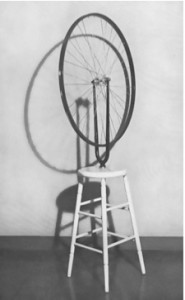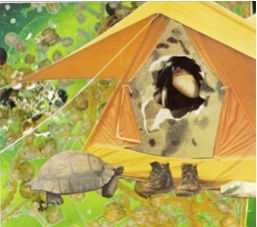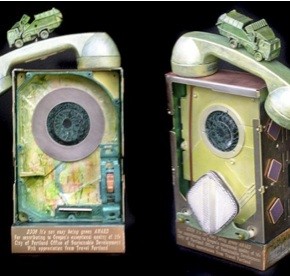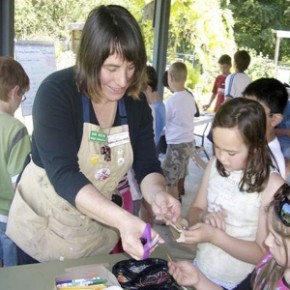

If it wasn’t for the creative reuse of garbage one of the most beloved characters in children’s literature would have been nothing more than a plateful of bacon. In the children’s book Charlotte’s Web when Wilbur’s life is in danger his farmland companions employ every resource possible to save him from certain death. When things seemed at their darkest for Wilbur his community got creative and took social action by presenting found text in a new way to assure his continued existence. Anthropomorphic upcycling made the simple country folk in E.B. White’s classic novel think differently and reimagine their value systems. Zuckerman didn’t know he was looking at garbage he just knew that what he was seeing was convincing, and that is the power of upcycling.
Upcycling was a term coined by Reiner Pilz in 1994 when trying to explain, in one word, how recycling was flawed. He explained that when most materials are recycled they lose some of their original value. He went on to elaborate upon the need to rethink what is seen as waste, and find ways to reuse these items that will either retain or enhance their value. This more from less sort of thinking has been an integral part of the art world for about one hundred years, starting with Duchamp’s use of the found object, which takes commonplace objects and turns them into art. It is through the work of the early 20th Century Dadaists that I first gained an appreciation for the reuse and reimagination of old images and text that I use in my own art. The use of collage in my work showed me that reinvention is just as original as invention itself, taking ephemera and making it art has always been very satisfying.
Finding the potential use in what might otherwise be easily discarded is not unique only to the art community. In 2002 William McDonough and Michael Braungart completely reinvented the book when they were able to publish Cradle to Cradle a totally waterproof “treeless” book that looks and feels like top quality paper, but is actually made from plastic resin. In the book McDonough and Braungart seek to revamp and transform the industrial world through the use of ecologically intelligent design. The authors see recycling as a vast industrial process that still creates waste and needlessly uses energy. The answer seems to be the reuse of materials in the least industrial means possible.

Bloomberg Philanthropic is one corporation that is not only making upcycling a priority they are making it their decor. A year ago Bloomberg executives commissioned artists to turn the corporations waste into furniture and art installations. Computer mice, cables, keyboards, and pallets that would have once been discarded were used to completely redesign the company’s interior. Pallets were turned into conference room furniture, computer mice were made into chandeliers, and old computer monitors were transformed into a digital pond that plays an animation of pond creatures continuously over its floor mounted screens. Bloomberg Philanthropic is just one example of the expanding ecological intelligence and global awareness that is taking definite shape in 2011.
Since early 2011 New York art galleries have hosted shows titled; Upcycled: Products made from post-consumer waste, CEC: Changing Everything Carefully, Appropriated Objects, and simply TRASH. New York’s Festival of Ideas for the New City hosted a successful upcycling workshop which was free to those who brought their own materials to use. The workshop showed those interested in upcycling just how to take post-consumer waste and reimagine it as sustainable works of art. In addition to upcycling art shows and workshops the internet remains a valuable resource for artists looking to engage in ecologically intelligent mediums for expression. Meetup.com is home to the Portland Artists Social Guild, a cooperative community who meets each month to share their art and methods in a supportive group setting. Last month’s theme was upcycling and, much like the New York workshop, the group found creative ways to breathe new life into the scraps they had to share.

One inspiration for the Portland Artists Social Guild’s upcycling month was local artist Bonnie Meltzer. Bonnie is an artist stimulated by the objects she finds. She says that these objects give her the groundwork to construct her ideas. She calls her art “very mixed media” and through this medium made the Travel Portland Sustainability Award which was presented to Portland’s city Commissioner in 2008. Bonnie makes art that uses repurposed materials to comment on land use, economics, and global warming while maintaining a humorous and personal edge. Bonnie Meltzer and her art have endured for three decades, and her ever increasing popularity shows that her own sustainability is on the increase.
Another key figure in the Pacific Northwest’s move to increase ecological intelligence through the arts is Ruby Re-Usable, nom de plume of Diane Kurzyna. Diane is an Olympia, Washington artist and mom who has been bringing her interest in creative reuse to the next generation of upcycling artists for over twenty years. Diane teaches kids all over Washington as a state-approved artist in residence. She is one of many community leaders bringing the creative reuse of materials into the

school classroom. Since the mid-90s programs like Eugene, Oregon’s MECCA (Materials Exchange Center for Community Arts) and California-based T4T (Trash for Teaching) collect and redistribute industrial materials for creative reuse. Diane is very passionate about environmental issues, which is a main reason she has dedicated her time to increasing awareness of sustainable creativity. She is able to keep busy while keeping the youth of Washington informed on the issues she is so passionate about.
Another highly thematic artist working with upcycled goods today is Virginia Fleck who creates site specific artworks for many prominent ecologically intelligent building developments including the US Embassy in Rwanda, Whole Foods Global Headquarters, and children’s hospitals in Nashville, TN and her current city of Austin, TX. Virginia creates mandalas from plastic bags that are vibrant and inspired. The mandala is commonly associated with the Hindu and Buddhist religions as a symbol that invokes sacred space. Virginia Fleck’s work can be found around art exhibitions and ecologically conscious constructions worldwide.
The ideas presented by any of these artists might not seem completely new, but they are ecological, modern and artistically innovative. In the next article I will examine several more artists who are taking the next step in found art and making ecologically intelligent creative decisions that are humble and radiant.
by James Meyer


Leave a Reply